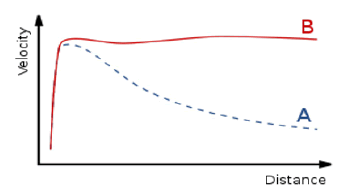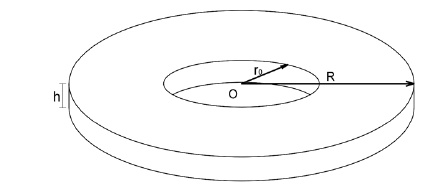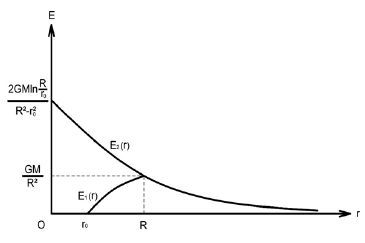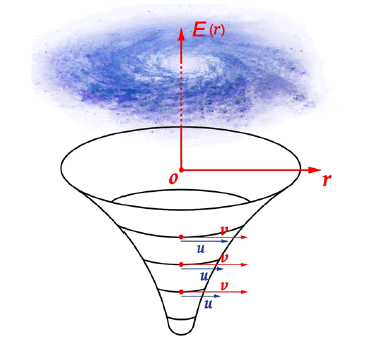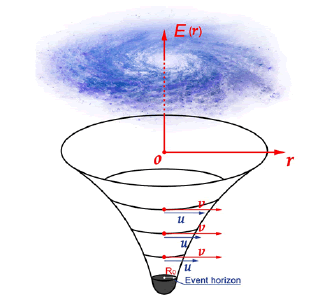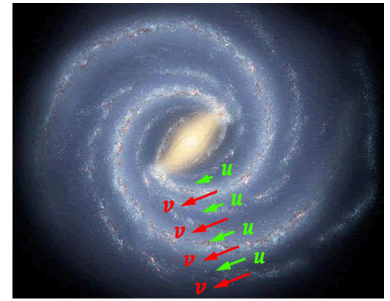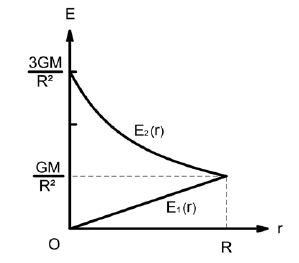The modification of newton’s gravitational law and Its application in the study of dark matter and black hole
Received: 29-Mar-2022, Manuscript No. PULJMAP-22-4625; Editor assigned: 31-Mar-2022, Pre QC No. PULJMAP-22-4625(PQ); Accepted Date: Apr 15, 2022; Reviewed: 12-Apr-2022 QC No. PULJMAP-22-4625(Q); Revised: 14-Apr-2022, Manuscript No. PULJMAP-22-4625(R); Published: 30-Apr-2022, DOI: 10.37532.2022.5.2
This open-access article is distributed under the terms of the Creative Commons Attribution Non-Commercial License (CC BY-NC) (http://creativecommons.org/licenses/by-nc/4.0/), which permits reuse, distribution and reproduction of the article, provided that the original work is properly cited and the reuse is restricted to noncommercial purposes. For commercial reuse, contact reprints@pulsus.com
Abstract
In this paper, Newton’s gravitational formula is modified by the principle
of spatial energy field superposition, and the problem of “missing mass “ of
galaxies is analyzed by this modified gravitational formula. It is concluded
that the velocity of stars in the galaxy is too fast because the energy field
intensity of the inner space of the galaxy or space-time curvature of the galaxy
is seriously underestimated, and there is no dark matter and supermassive
black hole in the galaxy.
Keywords
Mond; Dark matter; missing mass; Modification of gravity, general relativity; law of gravity; Galaxy cluster; Cosmology; Astrophysics.
Introduction
In 1922, astronomer Jacobus Kapteyn proposed that the possible existence of invisible matter around a star could be inferred indirectly from the motion of the star system [1]. In 1932, Jan Oort, an astronomer, conducted a dark matter study of the motion of stars near our solar system. However, no conclusive conclusion has been reached that dark matter exists [2].
In 1933, the astrophysicist Fritz Zwicky used the spectral redshift to measure the velocity of each galaxy in the Coma cluster relative to the cluster [3]. Using the virial theorem, he found that galaxies in the cluster are moving too fast to be bound by the gravity produced by the mass of visible galaxies in the cluster alone. Therefore, there should be a large amount of dark matter in the cluster, which is at least a hundred times the mass of visible galaxies.
S. Smith's observation of the Virgo Cluster in 1936 also supports this conclusion [4]. An important evidence for the existence of dark matter comes from the 1970 study by Vera Rubin and Kent Ford on the rotation velocity of stars in the Andromeda Nebula [5]. Using high-precision spectral measurements, they can detect the relationship between the speed and distance of peripheral stars away from the galactic nucleus. According to Newton's law of gravity, if the mass of a galaxy is mainly concentrated on the visible stars in the nucleus of the galaxy, the velocity of the stars around the galaxy will decrease with the distance. But observations show that the velocity of stars around the galaxy is constant over a considerable range. This means that there may be a lot of invisible matter in the galaxy not just in the core of the galaxy, and its mass is much larger than the sum of the mass of the luminous stars.
A: Rotational velocity predicted by Newtonian mechanics
V ∝ r∧ (−1/ 2)
B: Experimentally observed rotational velocity v ≈ Const
In the 1980s, a number of new observations emerged that support the existence of dark matter, including the gravitational lensing effect observed in background galaxy clusters, the temperature distribution of hot gas in galaxies and clusters, and the anisotropy of the cosmic microwave background radiation. The existence of dark matter has gradually been widely accepted by astronomy and cosmology.
An alternative idea, which has received little attention, is that there is no extra matter, just that our gravitational equation needs to be updated. However, numerous experiments looking for signs of dark matter particles have failed, and the possibility remains that the gravity formula must be revised.
The purpose of this study is to explain the missing mass problem of the universe by modifying Newton's law of gravity.
Modification of the gravity theory
Modification of Newton's universal gravitation formula
For a star with a mass of m in the galaxy, if the orbital radius of the star is r, and the total mass of matter contained in the sphere with an orbital radius of r is M(r), then according to Newtonian mechanics:

and

we get 
If let 
then we have

According to Equation (2.5), the velocity of stars in the galaxy is only related to the total mass M(r) of the matter in the stellar orbit, or the energy field intensity E1(r) of the stellar orbit and the orbital radius r. However,the energy field intensity E1(r) or space-time curvature at a certain point of orbit is determined by the magnitude of the gravitational acceleration G (M(r))⁄r^2 at that point.What makes the stars in galaxies move so fast is that they contain invisible “dark matter” (Figure 1).
In addition to the existence of dark matter in the interior of the galaxy, this paper proposes another explanation for the phenomenon of unusually fast motion of stars in the galaxy: According to the new etheric view [6],[7] every object (star, particle) in the universe carries an energy field or etheric (energy) layer that fills the whole universe, and the energy field intensity of a point in the universe is the superposition of the energy field intensity of all objects in the universe at that point. Therefore, the energy field intensity of any point in the inner space of a galaxy is mainly composed of the superposition of the energy field intensity of all stars in the galaxy at that point. The greater the energy field intensity, the greater the curvature of space-time. It can be seen that the space-time inside a galaxy is curved by all the celestial bodies that make up the galaxy, and the closer to the point of the galaxy's center of mass, the greater the intensity of the space energy field and the greater the curvature of space-time. There is no dark matter inside the galaxy, and no supermassive black hole at its center. The center of the galaxy is simply a deep potential well of highly curved space-time. Therefore, the velocity v of a star in the galaxy is related to the energy field intensity E2(r) of the star's orbit:

The energy field intensity E2(r) at a certain point in the stellar orbit is the superposition of the energy field intensity of all celestial bodies in the universe at this point:

In Equation (2.7), G0 is a constant, Mi is the mass of any celestial bod in the universe, and ri is the distance between the star and the celestial bod, and Ei is the energy field intensity of celestial bod Mi at that point. The relationship between energy density ρ(E) at a certain point in space and energy field intensity E2(r) is as follows:

In the above equation, k is a constant. Therefore, the magnitude of the gravitational force on an object of mass m is:

The direction of the gravitational force is:

In the above formula, ri is a vector from the mass center of object m to the mass center of object Mi. If let:

Then the universal gravitation formula is:

In the case of the solar system, since the sun makes up 99.8% of the total mass of the solar system, it's much more massive than any planet. In addition, for any planet, the distance between it and the sun is almost the closest relative to the distance between the planet and other planets (except the satellite of the planet). Therefore, according to Equation (2.9), for a planet (except the satellite of any planet) with a gravitational mass of m, such as the earth, the universal gravitational force on it can be approximated as:

In Equation (2.13), M is the mass of the Sun, and r is the distance between the Earth's center of mass and the Sun's center of mass.It follows that Newton's universal gravitation formula (2.1) is only an approximation of the modified universal gravitation formula (2.9).In the solar system, formula (2.1) is a very good approximation of formula (2.9) for the motion of planets relative to the sun, so there is no "mass missing" problem in the solar system, that is, there is no so-called dark matter. According to Equation (2.13), Newton's universal gravitation formula can only be used to describe the system composed of two celestial bodies which are very close together and the movement of the low-mass celestial bod relative to the high-mass celestial bod in the system composed of one high-mass celestial bod and several low-mass celestial bodies,for example, the movement of the planets in the solar system relative to the sun, or the movement of the spacecraft, meteors and other small mass objects relative to the earth, the moon, Mars and other planets, and the sun. In fact, so far, the existing theory of gravity has only been strictly verified in the above cases within the solar system. Therefore, for the motion of stars in a galaxy, the motion of galaxies in galaxy clusters, and the motion of matter in stars or planets, it is obvious that such an approximation as in Equation (2.13) cannot be obtained. Therefore, Newton's universal gravitation formula (2.1) is not valid. The following relation can be obtained from Equation (2.13):

Since G0 is constant, if r and M remain constant, then the following relation can be obtained from Equation (2.14):

In Equation (2.15), A is A constant. It can be seen from Equation (2.15) that as the universe expands and stars move away from each other, the gravitational constant G will decrease continuously.
The nature of gravity
According to the new etheric view in this paper, all forces are essentially the resultant force of the etheric (energy) pressure on the object in the space in which the object is located. The forces acting on an object are all caused by the asymmetrical distribution of the density of the energy (ether) in the space in which the object is located. Therefore, the gravitational force acting on an object is essentially the resultant force of the energy space formed by the superposition of the energy field of all objects in the universe in the space where the object is located. Since each object Mi provides an energy field Ei with asymmetric distribution intensity in the space where the object m is located, the total energy field intensity E2(r) provided by multiple objects in the space where the object m is located is clearly the superposition of the intensity of the energy field provided by each object Mi in the space where the object m is located:
Therefore, the magnitude of the total gravitational force on object m is:

Since the superposition of multiple asymmetrical energy fields can cancel out some asymmetries, the direction of the total asymmetry of the energy field or the total gravitational force on object m after the superposition is:

In the above formula, ri is the vector from the center of mass of object m to the center of mass of object Mi. It follows that the higher the energy density of space in which an object is located, the greater the gravitational force acting on the object. According to Equation (2.15), with the expansion of the universe, the space energy density will continue to decrease, so with the expansion of the universe, the universal gravitational constant G will continue to decrease. Because the closer you get to the center of the galaxy, the sun, or the earth, the higher the space energy density, so the closer you get to the center of the galaxy, the sun, or the earth, the greater the gravitational constant G.
The solution to the problem of galaxy mass missing Since galaxies are generally disk-shaped with thick center and thin edge, for convenience, we approximate the galaxy as a thin disk with mass M, mass density ρ, outer radius R, inner radius r0, and thickness h, as shown in Fig. 2. For a disk like this:
According to Newton's law of universal gravitation, the distribution of energy field intensity E1(r) in the inner and outer space of the galaxy can be obtained:

It can be concluded from (3.1) that:

The functional relationship between E1(r) and r is shown in Figure 3.
From
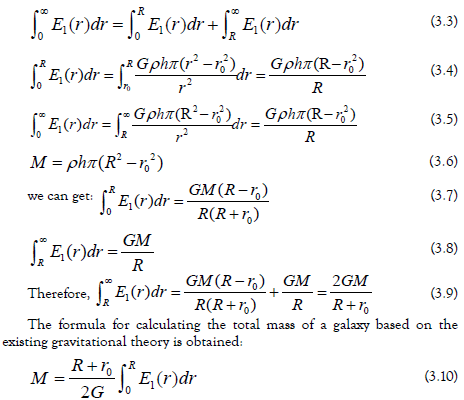
The total mass M of the galaxy can also be obtained by summing the mass of stars calculated by measuring the luminous intensity of each star. According to Equation (2.5), E1(r) can be obtained by measuring the velocity and orbital radius of each star. The reality is that formula (3.10) does not hold because M is too small. Presumably, galaxies contain large amounts of invisible dark matter.
However, according to the superposition principle of energy field intensity, the energy field intensity at the center of the galaxy is:
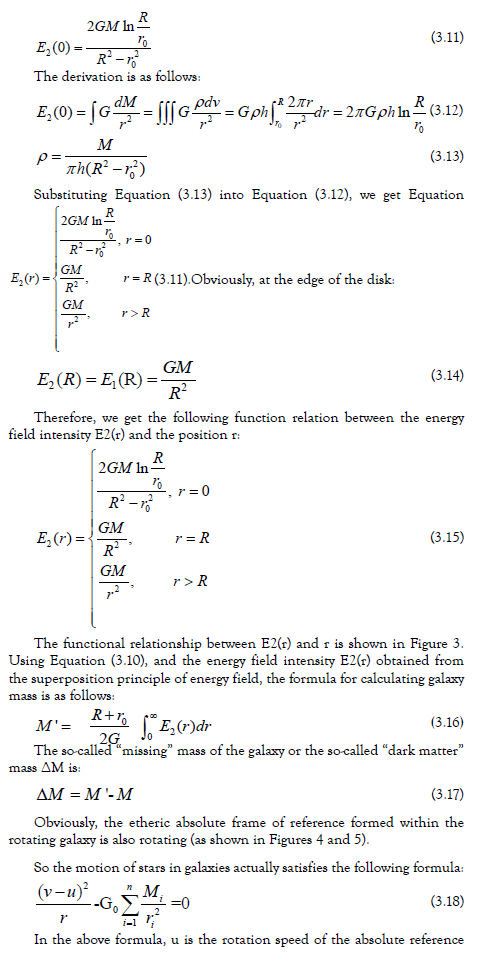
In the above formula, u is the rotation speed of the absolute reference frame of the galactic ether relative to the absolute reference frame of the cosmic ether; v is the rotation speed of the stars in the galaxy relative to the absolute reference frame of the cosmic ether; v-u is the rotation speed of the stars in the galaxy relative to the absolute reference frame of the galactic ether. The u increases with the increase of galaxy radius r, as can be seen from figs .4 and 5. Therefore, although the velocity of stars relative to the absolute reference frame of the cosmic ether is approximately constant from Earth observation (v≈Const, shown in figure 1 curve B), the velocity of stars relative to the absolute reference frame of the galactic ether i.e., (v-u), decreases with the increase of galaxy radius r.
Is there really a supermassive black hole in the center of the galaxy? If the total mass of the galaxy is large enough and the scale is small enough that the superposition of the intensity of the energy field of all objects in the galaxy at the center of the galaxy results in the space-time curvature of the center of the galaxy exceeding the space-time curvature of the "horizon ", that is

At the center of the galaxy, the region within the event horizon, i.e

forming a so-called "black hole", as shown in Figure 6. Therefore, there is no such celestial body as a "supermassive black hole" at the center of the galaxy. The so-called supermassive black hole is only a highly curved space-time or deep potential well formed by galaxies at its center.
Explanation of the super-gravity lens effect in galaxies
Since the interior of the galaxy (in the region where the r is less than R) E2(r) is greater than the E1(r) (shown in figure 3), that is, the actual curvature of space-time within the galaxy is greater than that calculated by the gravitational mass of the galaxy. So,when light passes through the interior of a galaxy, especially through a region close to the center of the galaxy, it produces an extra-conventional gravitational lens effect.
Calculation of the total amount of "missing mass" or "dark matter" in the universe
If the universe is simplified as a sphere with a total mass of M, an average mass density of ρ, and a radius of R, then for the interior of the sphere, according to the law of universal gravitation:
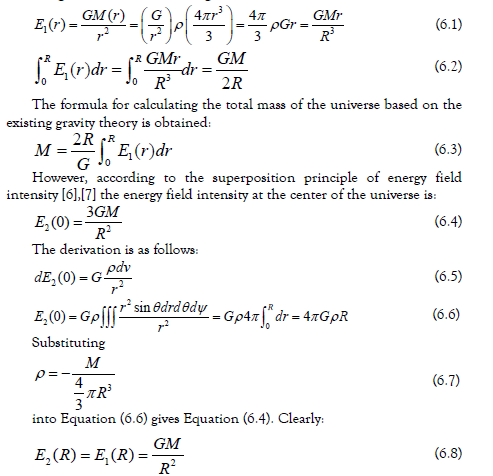
The functional relations of E1(r), E2(r) and r are shown in Figure 6.
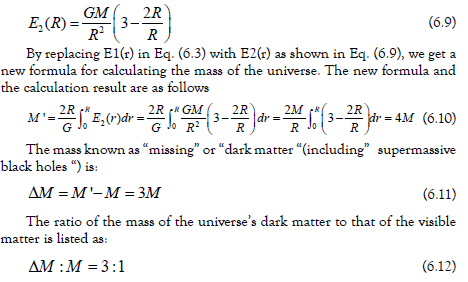
The proportion of dark matter to all matter (dark matter + visible matter) in the universe is:

Compared with 85% of the literature [8], the above result is only 10% lower. The theoretical calculation of “dark matter” mass is 10% lower mainly because the distribution of cosmic matter is not uniform and decreases with the increase of distance from the mass center of the universe (Figure 7).
Discussion
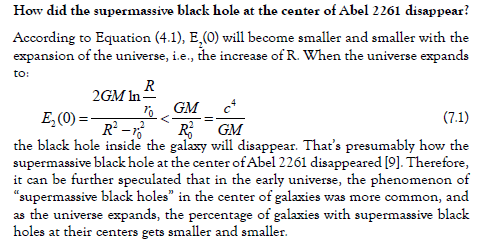
the black hole inside the galaxy will disappear. That's presumably how the supermassive black hole at the center of Abel 2261 disappeared [9]. Therefore, it can be further speculated that in the early universe, the phenomenon of “supermassive black holes” in the center of galaxies was more common, and as the universe expands, the percentage of galaxies with supermassive black holes at their centers gets smaller and smaller.
How do ordinary mass black holes form?
Because the space energy density or space-time curvature of the dense region of stars near the center of a galaxy is already very high, large celestial bodies in this region tend to form curved space-time at their center or in their space with curvature beyond the event horizon. At the edge of the galaxy, because of the small space energy density, it is difficult for celestial bodies to form curved space-time at their center or in their space with curvature beyond the event horizon. Therefore, it can be inferred that all black holes except supermassive black holes in the center of the galaxy are located in star-dense region near the center of the galaxy.
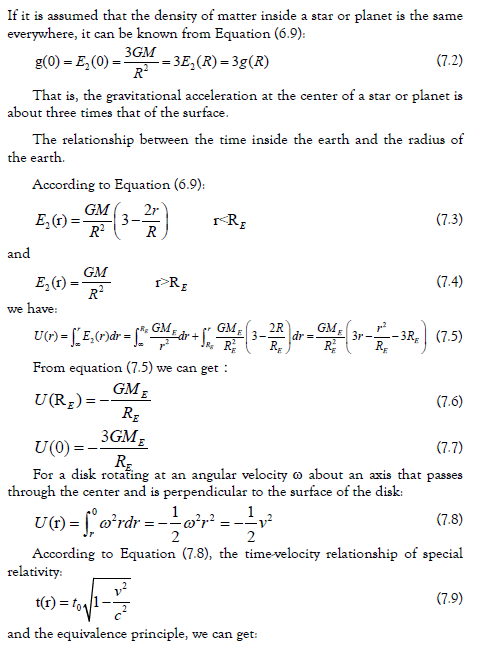

where t(r) is the time interval in the gravitational field and t0 is the time interval outside the gravitational field, respectively. U(r) is the gravitational potential. Substitute Equation (7.5) into Equation (7.10) we obtain:
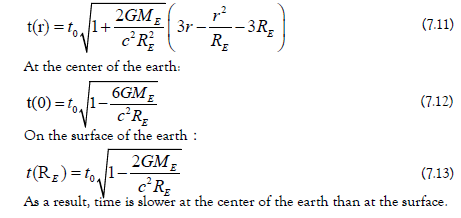
Conclusion
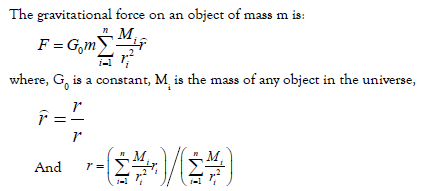
In the above formula, u is the rotation speed of the absolute reference frame of the galactic ether relative to the absolute reference frame of the cosmic ether; v is the rotation speed of the stars in the galaxy relative to the absolute reference frame of the cosmic ether; v-u is the rotation speed of the stars in the galaxy relative to the absolute reference frame of the galactic ether.
There is no “dark matter” inside galaxies.
The so-called supermassive black hole is just a highly curved space-time or deep potential well formed by galaxies at its center.
REFERENCES
- Kapteyn JC. No. 230. First attempt at a theory of the arrangement and motion of the sideral system. Astrophys J. 1922;230:1-27.
- Oort JH. The force exerted by the stellar system in the direction perpendicular to the galactic plane and some related problems. Bull Astron Inst Neth 1932;6:249.
- Zwicky F. Die rotverschiebung von extragalaktischen nebeln. Helvetica physica acta 1933;6:110-27.
- Smith S. The mass of the Virgo cluster. Astrophys J. 1936;83:23.
- Rubin VC, Ford Jr WK, Thonnard N. Rotational properties of 21 SC galaxies with a large range of luminosities and radii, from NGC 4605/R= 4kpc/to UGC 2885/R= 122 kpc. Astrophys J. 1980;238:471-87.
- Wang JA. The Modification of Special Relativity. J Mod Phys 2019;10(14):1615-44.
[Google Scholar ] [Crossref]
- Wang, J.A. On the Dynamic Mechanism of Ocean Current and Atmospheric. Adv Geosci 2019;3(1):23.
- Daw E, Fox J R, Gauvreau J L Limits on spin-dependent WIMP-proton cross-sections using the DRIFT-IId directional dark matter detector. J University of Sheffield, 2011.
- Burke-Spolaor S, Gültekin K, Postman M, Lauer TR, Taylor JM, Lazio TJ et al. A radio relic and a search for the central black hole in the abell 2261 brightest cluster galaxy. Astrophys J. 2017;849(1):59.
- Gültekin K, Burke-Spolaor S, Lauer TR, Lazio TJ, Moustakas LA, Ogle P et al. Chandra Observations of Abell 2261 Brightest Cluster Galaxy, a Candidate Host to a Recoiling Black Hole. Astrophys J. 2021;906(1):48.




